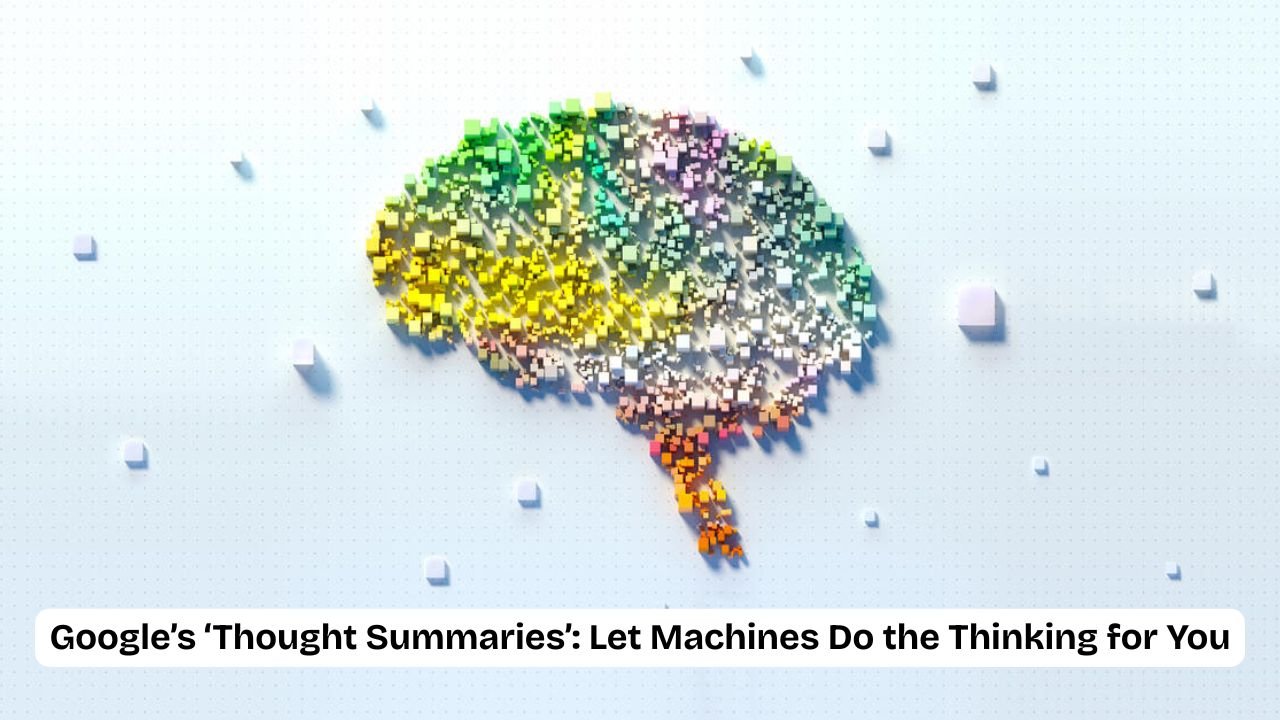Managing the constant flow of information has become one of the biggest challenges people face today. Whether it’s long emails, detailed reports, or extensive meeting notes, the sheer amount of text that needs to be read and understood can be overwhelming. To address this, Google has introduced a feature called Thought Summaries, which allows machines to process and condense information so users don’t have to spend time reading every word. This AI-powered tool focuses on providing clear, concise summaries that capture the most important ideas and details from longer content.
Thought Summaries differ significantly from traditional summarization tools. Instead of simply cutting down text by removing sections or extracting key sentences, the AI behind Thought Summaries works to truly understand the meaning and context of the material. It analyzes the intent, tone, and nuances in the text, enabling it to present a summary that is both accurate and easy to comprehend. This means users receive summaries that don’t just shorten text but offer relevant insights and highlight the points that matter most.
The technology powering Thought Summaries combines several advanced artificial intelligence methods. Natural language understanding plays a crucial role, allowing the AI to parse not just words, but the relationships between ideas, the sentiment behind statements, and the overall message. It also takes context into account, which is essential when dealing with ongoing conversations or documents that reference previous information. By identifying key facts, dates, decisions, and important details, the AI then generates a new, original summary that feels natural and coherent, rather than just piecing together copied text. Over time, it can adapt to individual user preferences, customizing summaries to emphasize what each person finds most useful.
This feature offers practical benefits across many situations. In professional environments, for instance, it can save significant time when managing email. Rather than sifting through long threads, users can quickly grasp the essentials, including outstanding tasks and decisions. Meeting notes can be automatically generated, freeing participants from the burden of manual note-taking while ensuring important points and next steps are clearly recorded. For students and researchers, Thought Summaries provide a shortcut to understanding lengthy academic papers or articles by distilling them into their core findings. In customer service, AI-driven summaries speed up issue resolution by providing quick overviews of support tickets or customer inquiries. Writers and content creators can also benefit by using summaries to review related materials, organize ideas, and identify gaps.
The real value of Thought Summaries lies in their ability to act as a cognitive assistant. Processing large amounts of text manually can be tiring and inefficient. By offloading this initial step to AI, people can focus their attention on more meaningful tasks such as analyzing information, making decisions, or generating creative ideas. This shift in workflow can improve productivity and reduce mental fatigue, especially in environments where keeping up with information is essential but time is limited.
However, the technology does come with some challenges. Accuracy is one of the biggest concerns. The AI must avoid leaving out critical information or misrepresenting the original content. Ongoing improvements and occasional human review are necessary to maintain high-quality summaries. Bias can also be an issue if the AI’s training data contains skewed information, so developers must work diligently to minimize unintended slants. Privacy and security are especially important since Thought Summaries might process sensitive or confidential material. Google addresses this by implementing strong data protection and encryption measures. Finally, for users to trust this technology, transparency is crucial. People need to understand how summaries are created and have confidence that the AI is fair and reliable.
The foundation of Thought Summaries lies in transformer-based AI models, which are capable of understanding language at a deep level. Google combines these with other specialized systems that track conversations across multiple turns, tailor summaries to specific fields like law or medicine, and even allow users to interact with summaries by asking for clarifications or more details. This results in summaries that are not only brief but also highly relevant and context-sensitive.
Looking ahead, Google intends to integrate Thought Summaries more thoroughly into its products such as Gmail, Google Docs, and Google Meet. Imagine finishing a meeting and immediately receiving a brief report outlining what was discussed and the follow-up tasks. Or while working on a document, getting a quick summary to share with colleagues, helping them understand your work without reading the entire draft. There is also the potential for this technology to handle information from other media types like audio or video, offering richer insights by combining multiple sources of information.
As AI continues to improve, Thought Summaries might also begin to assist with more complex decision-making by combining summarization with data analysis and trend prediction. This could provide users with not just what happened, but what might happen next, helping them plan and respond more effectively.
In summary, Google’s Thought Summaries provide a useful way to make large amounts of text easier to handle. By letting machines analyze and condense information, users can save time, reduce mental strain, and stay better informed. While there are important issues to manage, such as accuracy and privacy, this tool demonstrates how AI can support human tasks without replacing judgment. Instead of spending hours reading and processing, people can focus on understanding and acting on the information that matters most. In a world filled with information, Thought Summaries help turn complexity into clarity, making it easier to keep up and stay productive.

